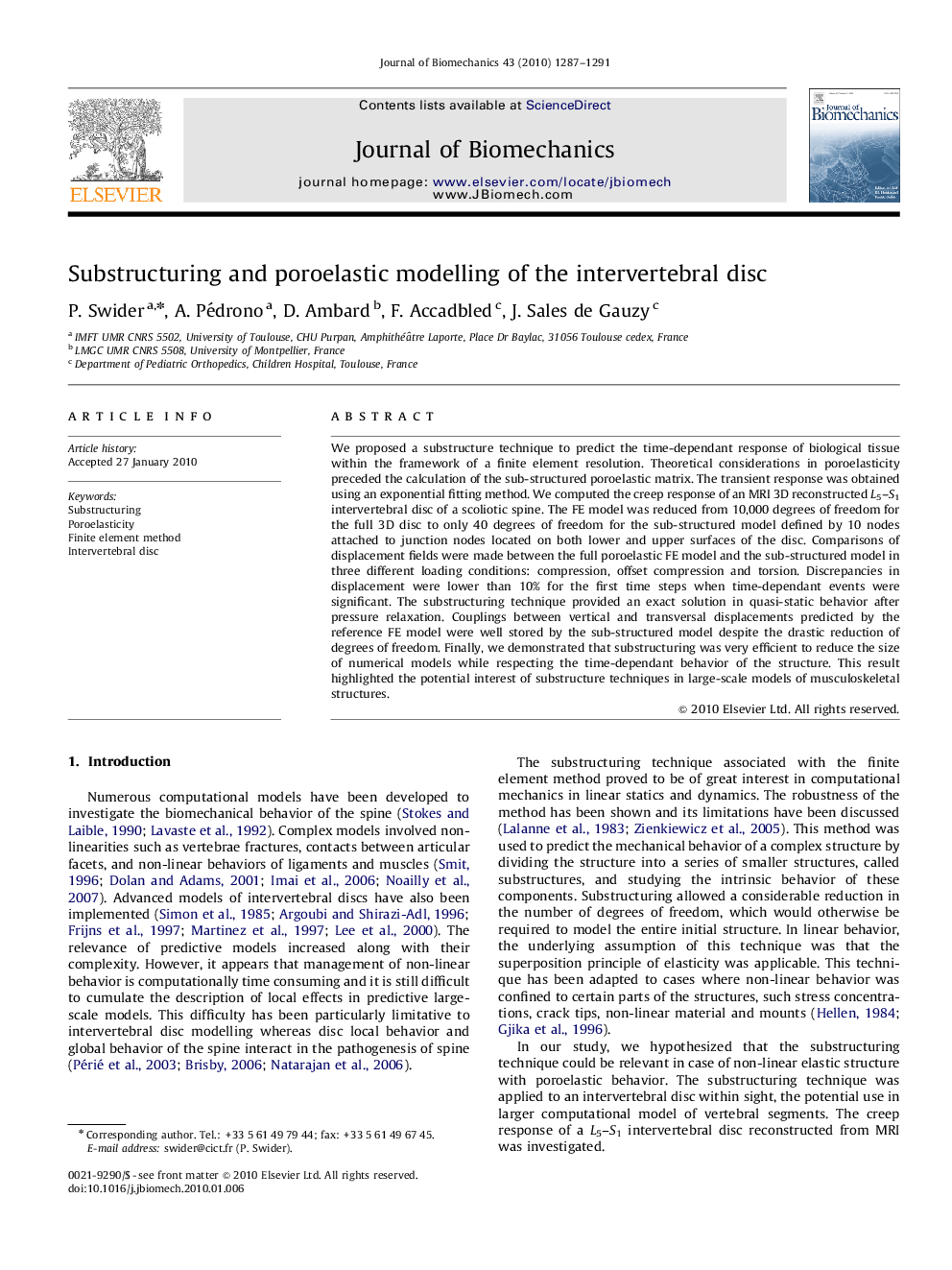| Article ID | Journal | Published Year | Pages | File Type |
|---|---|---|---|---|
| 873658 | Journal of Biomechanics | 2010 | 5 Pages |
We proposed a substructure technique to predict the time-dependant response of biological tissue within the framework of a finite element resolution. Theoretical considerations in poroelasticity preceded the calculation of the sub-structured poroelastic matrix. The transient response was obtained using an exponential fitting method. We computed the creep response of an MRI 3D reconstructed L5–S1 intervertebral disc of a scoliotic spine. The FE model was reduced from 10,000 degrees of freedom for the full 3D disc to only 40 degrees of freedom for the sub-structured model defined by 10 nodes attached to junction nodes located on both lower and upper surfaces of the disc. Comparisons of displacement fields were made between the full poroelastic FE model and the sub-structured model in three different loading conditions: compression, offset compression and torsion. Discrepancies in displacement were lower than 10% for the first time steps when time-dependant events were significant. The substructuring technique provided an exact solution in quasi-static behavior after pressure relaxation. Couplings between vertical and transversal displacements predicted by the reference FE model were well stored by the sub-structured model despite the drastic reduction of degrees of freedom. Finally, we demonstrated that substructuring was very efficient to reduce the size of numerical models while respecting the time-dependant behavior of the structure. This result highlighted the potential interest of substructure techniques in large-scale models of musculoskeletal structures.
